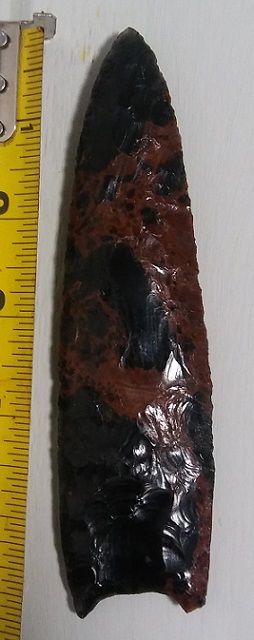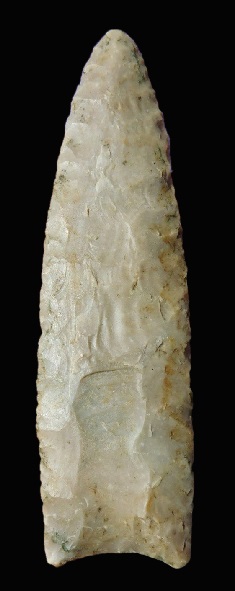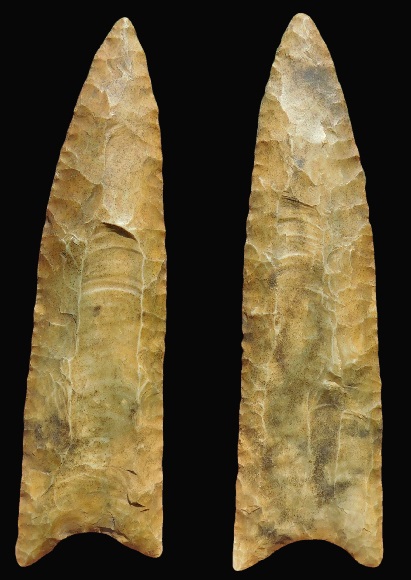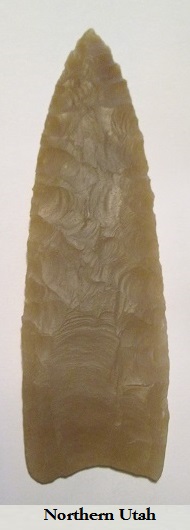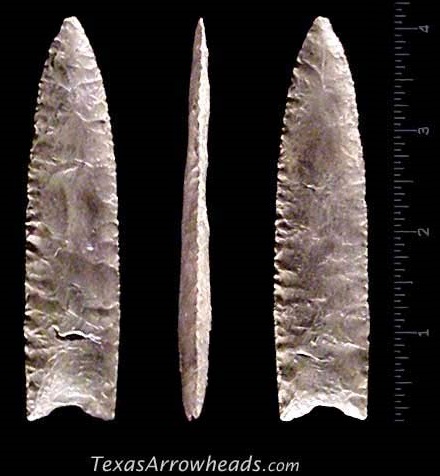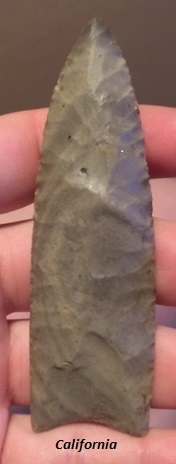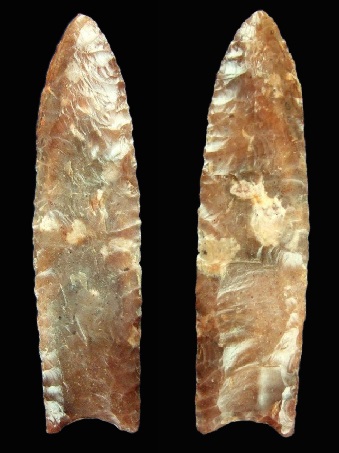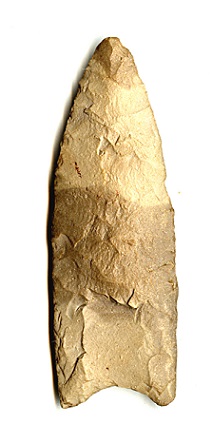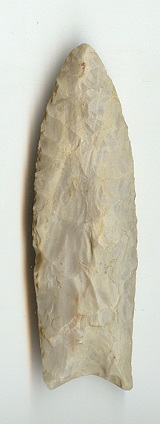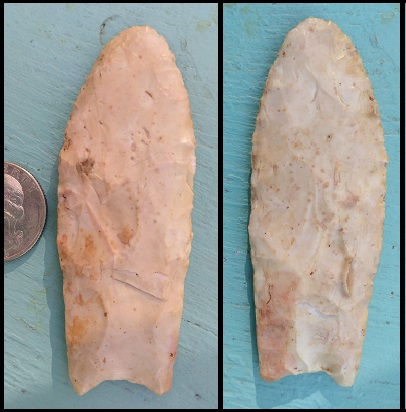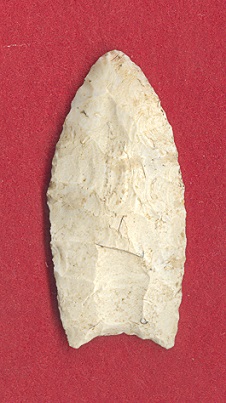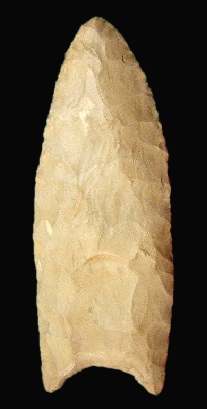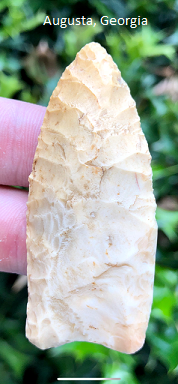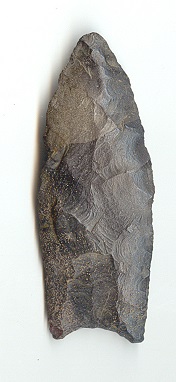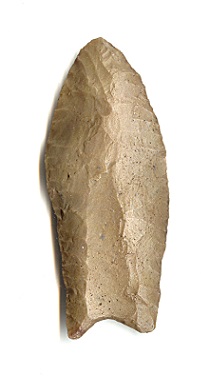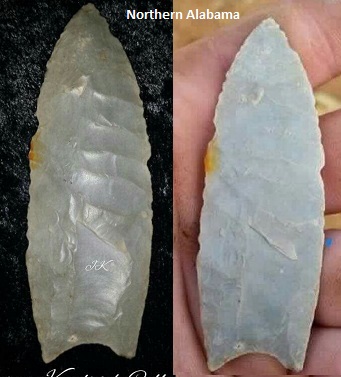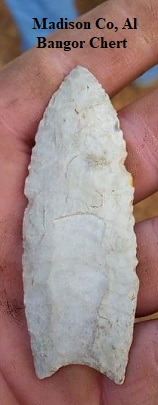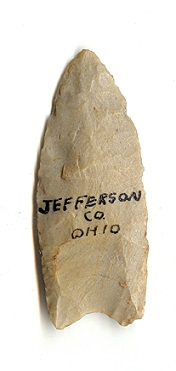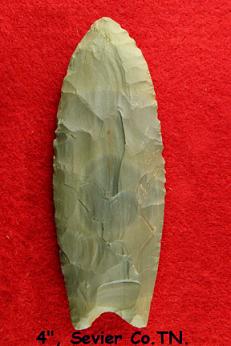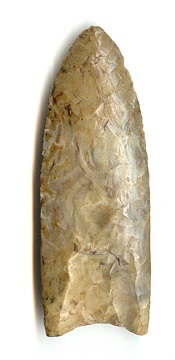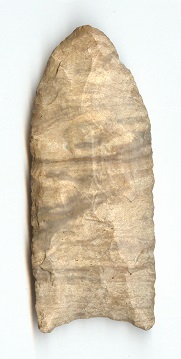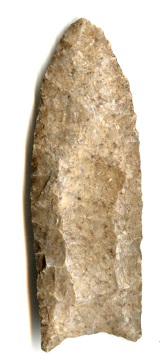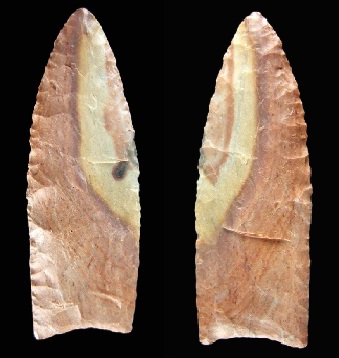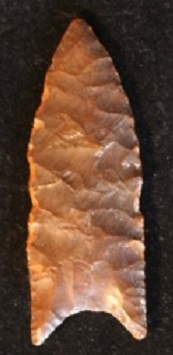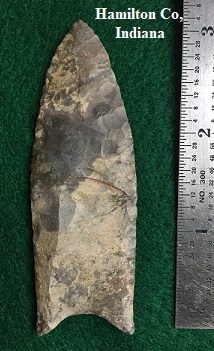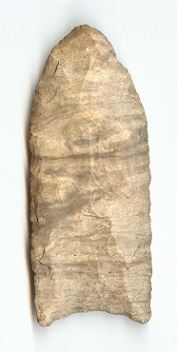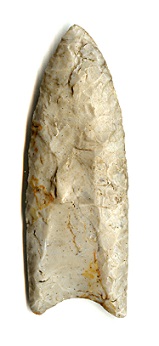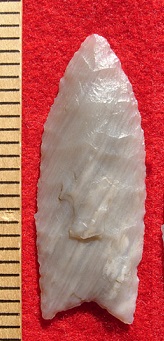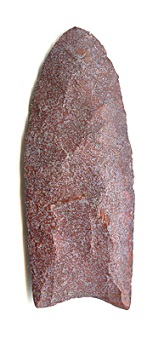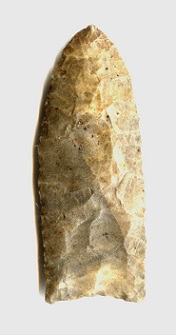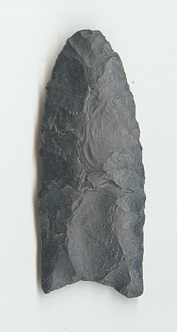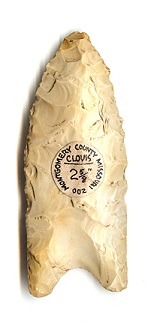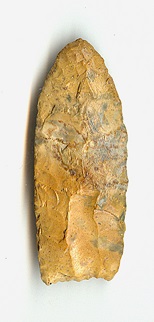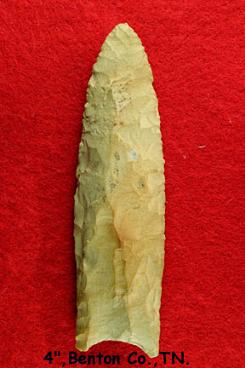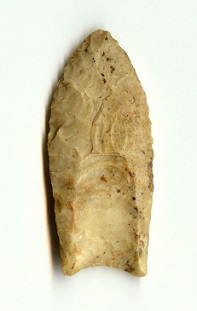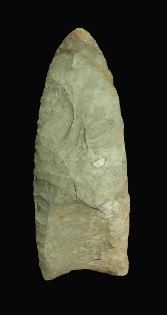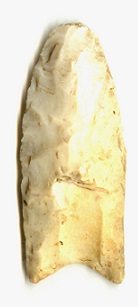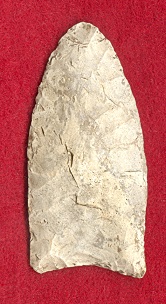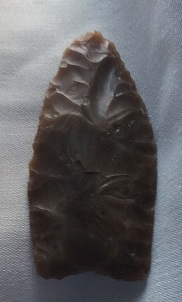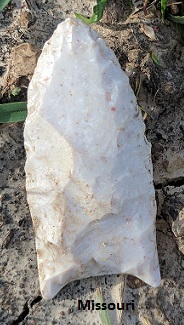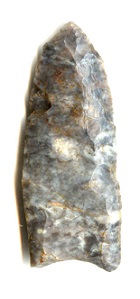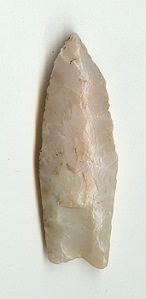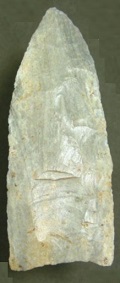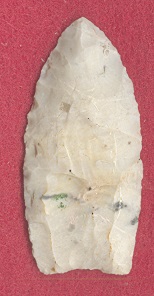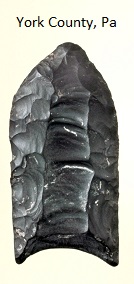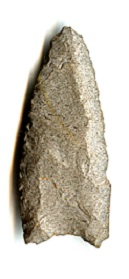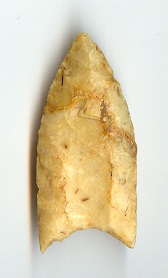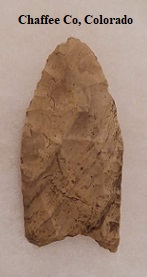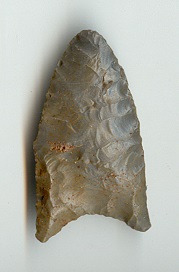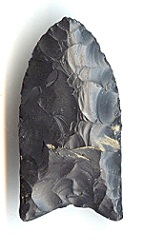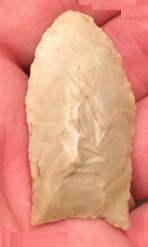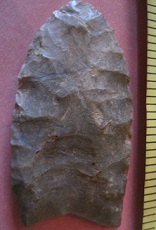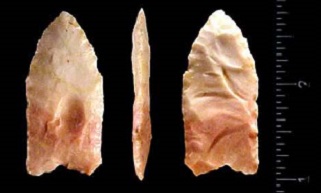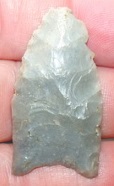Outline is Representative of Size and Shape:
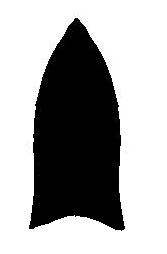
Name Details:
Identified By: Edgar B. Howard
Named For: Type Site
Date Identified: 1935
Type Site: Clovis Site, Blackwater Draw Locality, Curry County, New Mexico
Identified By: Edgar B. Howard
Named For: Type Site
Date Identified: 1935
Type Site: Clovis Site, Blackwater Draw Locality, Curry County, New Mexico
Point Validity:
Valid type
Howard was a distinguished anthropologist and a Professor of Anthropology at the University of Pennsylvania and is considered by many to be the discoverer of the first inhabitants of the American Continent. This type was named in a professional publication and is considered a valid type by all.
Howard was a distinguished anthropologist and a Professor of Anthropology at the University of Pennsylvania and is considered by many to be the discoverer of the first inhabitants of the American Continent. This type was named in a professional publication and is considered a valid type by all.
Clovis Fluted
Cluster: Clovis Cluster Description of Physical Characteristics and Flaking Pattern:
This is a thin small to large triangular fluted point with a flattened cross section. The blade has an outward recurvate to excurvate shape. The base may range from an auriculate form, but may also be expanding or contracting giving this point an appearance of an auriculate point, or a lanceolate point. The base is concaved with a flute running from the base up the face of the blade usually on both faces, but may also be fluted only on one face. The flute commonly extends 1/5 to 1/3 up the face of the point. The flute commonly terminates in a step or hinge fracture. Medium to heavy grinding is seen on the hafting and basal region. This point was manufactured with percussion flaking used to shape and thin the blade with pressure flaking used to trim or dress the blade forming a flaking pattern ranging from random flaking to collateral or transverse flaking.
Size Measurements:
Length - 45 to 150 mm, Width - 20 to 45 mm (Sizes vary greatly)
Length - 45 to 150 mm, Width - 20 to 45 mm (Sizes vary greatly)
Commonly Utilized Material:
Additional Comments:
Many professional refer to any Paleo period fluted point as a Clovis point. However, there are subtle differences in the overall shape based on geographical region. Some of these differences have been identified and a sub type has been created, other differences have not yet been labeled as a sub-type. There is great debate over the classification of Clovis style points. It is argued that the same characteristics of any single type can be seen through-out the distribution of the Clovis type and represent normal variations of the Clovis point. Others argue that specific areas specialized the type and are seen with greater frequency in those areas. Therefore, these represent later variants and unique subtypes to the Clovis point.
Many professional refer to any Paleo period fluted point as a Clovis point. However, there are subtle differences in the overall shape based on geographical region. Some of these differences have been identified and a sub type has been created, other differences have not yet been labeled as a sub-type. There is great debate over the classification of Clovis style points. It is argued that the same characteristics of any single type can be seen through-out the distribution of the Clovis type and represent normal variations of the Clovis point. Others argue that specific areas specialized the type and are seen with greater frequency in those areas. Therefore, these represent later variants and unique subtypes to the Clovis point.
Distribution: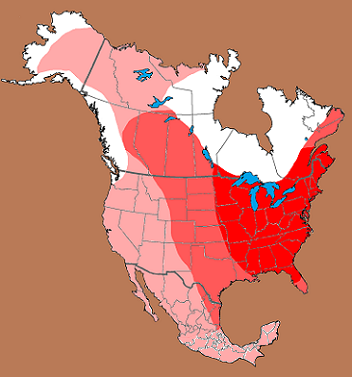

Distribution Comments:
This point has the heaviest concentrations through-out the Ohio, Tennessee, and Mississippi River basins and the eastern United States (red). Concentrations diminish in the Plains of regions of the United States and Canada (dark pink). Clovis points are rarely found west of the Continental Divide and into the Arctic region of Canada and Alaska (light pink). This point is not reported into the coastal regions of Alaska and Canada possible due to the water levels at the time This point is not reported into the ice shelf regions of the Canadian interior.
This point has the heaviest concentrations through-out the Ohio, Tennessee, and Mississippi River basins and the eastern United States (red). Concentrations diminish in the Plains of regions of the United States and Canada (dark pink). Clovis points are rarely found west of the Continental Divide and into the Arctic region of Canada and Alaska (light pink). This point is not reported into the coastal regions of Alaska and Canada possible due to the water levels at the time This point is not reported into the ice shelf regions of the Canadian interior.
Age / Periods:
Date: 15,000 - 10,000 B.P.
Cultural Period: Paleo
Glacial Period: Late Pleistocene
Culture:
Date: 15,000 - 10,000 B.P.
Cultural Period: Paleo
Glacial Period: Late Pleistocene
Culture:
Age Details:
Similar Points:
Agate Basin, Angostura, Alder, Barber, Bat Cave, Belen, Black Rock, Barnes, Beaver Lake, Browns Valley, Chipola, Conerly, Copena Articulated, Crowfield, Cumberland, Dalton, Golondrina, Fayette, Folsom, Fredrick, Lovell, Midland, Northumberland, Red Stone, Simpson, Suwannee, Union, Withlacoochee, Wheeler
Agate Basin, Angostura, Alder, Barber, Bat Cave, Belen, Black Rock, Barnes, Beaver Lake, Browns Valley, Chipola, Conerly, Copena Articulated, Crowfield, Cumberland, Dalton, Golondrina, Fayette, Folsom, Fredrick, Lovell, Midland, Northumberland, Red Stone, Simpson, Suwannee, Union, Withlacoochee, Wheeler
Other points in this cluster / Related / Associated Points:
Anzick, Clovis Colby, Clovis Hazel, Clovis St. Louis, Clovis Tulare, Clovis Un-fluted, Debert, Holcombe, Redstone, Ross County
Anzick, Clovis Colby, Clovis Hazel, Clovis St. Louis, Clovis Tulare, Clovis Un-fluted, Debert, Holcombe, Redstone, Ross County

